How to Test Resistance of O2 Sensor Heater
In this video I'll show you how to test the resistance of an O2 sensor heater using a digital volt/ ohm meter. The O2 sensor featured in this video is a 3 wire O2 sensor. However, the information is applicable for testing 4 wire O2 sensors also. The process is very simple. First, you have to identify the two wires going to the heater of the O2 sensor. Once these wires are identified by color you'll need to find out what pins the wires go to on the harness side of the O2 sensor connector. Then you disconnect the O2 sensor connector and prob the pins on the component side of the connector that the pins of the two heater circuit wires connect to. Take your resistance reading and compare it to the specification in your manual.
The O2 sensor heater is the component inside the oxygen sensor responsible for heating the sensor up more quickly than the exhaust would. Engineers found that by adding a heater to an oxygen sensor the sensor heats up more quickly. Of course the sensor only operates correctly at a very high temperature. So, the more quickly the sensor is heated up the more quickly the sensor can be used to accurately monitor the exhaust gas. This helps in getting the vehicle into "closed loop" more quickly and improves fuel economy and emissions.
Note: When probing pins inside connectors use care not to damage pins. Placing probes that are too large into connectors could spread female pins and cause a poor pin fitment condition. If probing a female pin be sure the probe is the same sized as the male pin that connects to the female pin. This will insure you don't cause damage to the pin.
Also, not every wire schematic will look like the one shown in the video. You'll need to read and understand your manual and wire schematic for the vehicle you are working on in order to identify the correct wires to prob.
DISCLAIMER
Barbour's Auto Help is not responsible for any damage or personal injury incurred in the process of performing any auto repairs done by you the viewer. Automotive repair is extremely dangerous. Repair your vehicle at your own risk. It is the viewers responsibility to verify all information and procedures as outlined in YOUR REPAIR MANUAL AND OWNERS MANUAL FOR YOUR VEHICLE. Owning and using a repair manual suited for your vehicle is essential for correctly and safely performing ANY repair or diagnostic to your vehicle. Always wear safety glasses and heed all instructions for use applicable to any piece of equipment you may use. Due to circumstances out of the control of Barbours Auto Help, Barbours Auto Help makes no guaranty that by the use of the information given in this video a quality repair will be made. Barbour'sAutoHelp makes no guaranty that the information provided is totally complete, syncronized and accurate. Verify everything using an appropriate repair manual. Follow the repair manual over this videos content. You can do it. Do it right and do it safely.
Repair your vehicle at your own risk! Barbour's auto help does not guaranty a proper diagnosis using these techniques.
-
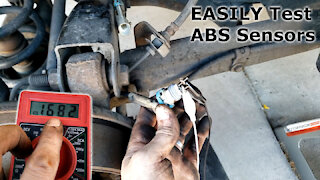 9:38
9:38
TutorialGenius
2 years ago $0.12 earnedHow to Test ABS Wheel Speed Sensors for Resistance and AC Voltage
256 -
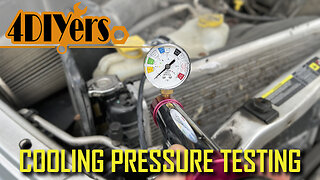 4:33
4:33
4DIYers
8 months agoHow to Pressure Test a Cooling System
22 -
 8:27
8:27
SeidelRanch
3 years agoUnboxing and Testing the Mr Heater Big Buddy Indoor Safe Heater
1751 -
 3:35
3:35
POSSENTIHEAT
2 years agoHEATERS AND SENSORS by POSSENTI HEAT
16 -
 11:32
11:32
Electrician U
1 year agoHow to Test for Resistance? What is Continuity?
8151 -
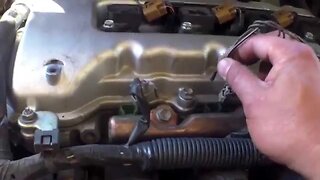 1:33
1:33
Fix it Angel Car Repair Channel
9 years agoSimple RESISTENCE test fuel injector Toyota Corolla √ Fix it Angel
18 -
 13:24
13:24
gofasthavefun.ca
2 years agoHeater Core Bypass Dorman 626-001 (Emergency Repair Only) | AnthonyJ350
451 -
 1:37
1:37
Fix it Angel Car Repair Channel
10 years ago $0.03 earnedP0128 Replace Coolant Temperature Sensor Toyota Camry √ Fix it Angel
23 -
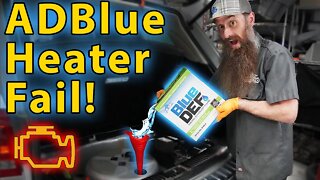 23:23
23:23
Humble Mechanic
2 years ago $0.01 earned3.0t TDI AdBlue Heater Failure ~ P205B Check Engine Light
2471 -
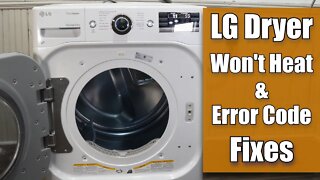 18:54
18:54
Ben's Appliance Tutorials and More
1 year ago $0.30 earnedLG Dryer Not Heating - How to Test and Fix
98